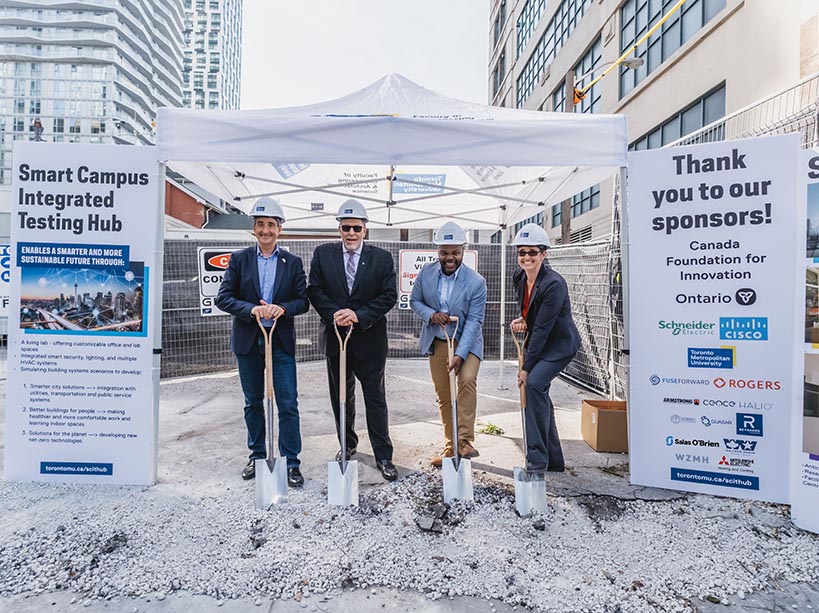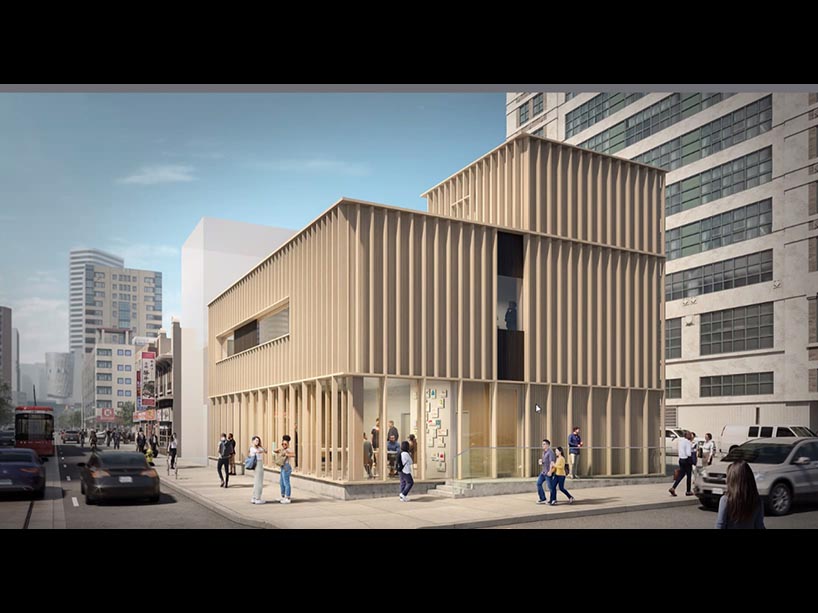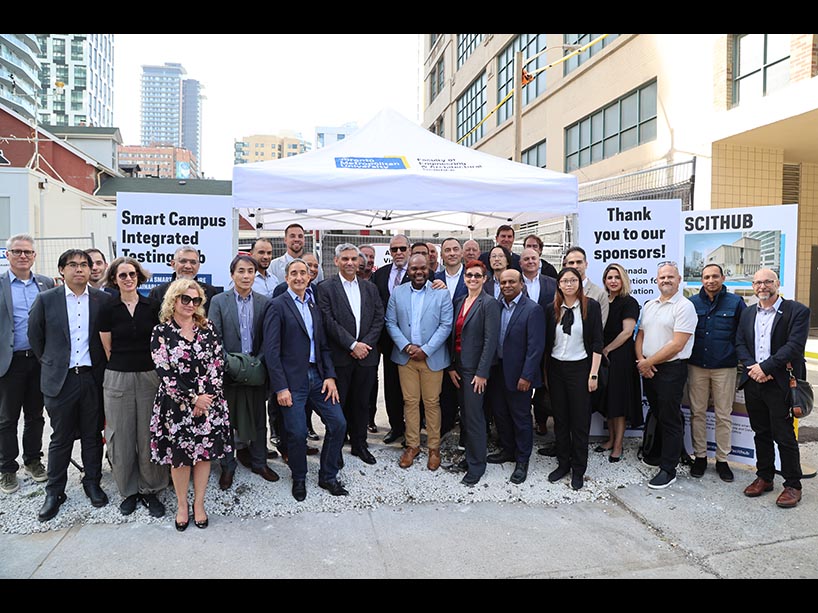TMU breaks ground on world’s first digitally enabled building

From left: Xavier Biot, vice president, Power Distribution & Digital Energy, Schneider Electric; Mohamed Lachemi, president and vice-chancellor, TMU; councillor Chris Moise, Ward 13, Toronto; and professor Jenn McArthur, FEAS. Photo credit: Jae Yang
A world first is coming to TMU’s campus. Recently, leaders from the construction, architecture and sustainability sectors gathered to mark an official groundbreaking and the kick-off to build the most advanced smart building research facility in the world at TMU.
The Smart Campus Integrated Testing Hub - or SCITHub - is set to open in fall 2025. The facility will be the world’s first 100 per cent digitally enabled building. By integrating different technologies, including HVAC, lighting, security, IT and communications, SCITHub will allow researchers to explore solutions to decarbonize built environments and bring Canada closer to net-zero emissions.
“We’re living in a time where we’re seeing increasing talk about smart cities [and] smart campuses and digital twins. SCITHub will be a world-leading centre for that research,” said architectural science professor and SCITHub principal investigator, Jenn McArthur. “Technology like AI and machine learning will really help us inform the next generation of city building.”
The two-storey building will have a fully integrated IT system connecting all building elements together that can be controlled remotely. The first floor will facilitate research and development for Smart Homes and hosts the Operations and Visualization Centre tying the SCITHub into the wider Smart Campus Digital Twin - a digital version of TMU hosting facility management data to support decarbonization, while the second floor will have workshops and test cells to compare different technologies for Smart Offices.

A rendering of the two-storey smart building set to open on TMU’s campus in 2025.
SCITHub will develop, test, and showcase the full range of smart building technologies to support the homes and offices of the future. There will be three areas of research in the building; smart city technology development, buildings for health and wellness of people and supporting net-zero carbon goals.
At the ground breaking ceremony held recently, TMU’s president and vice-chancellor, Mohamed Lachemi, noted that SCITHub will be a model for what sustainable construction can look like in the future.
“This smart building will be an opportunity to showcase state-of-the-art technologies needed to mitigate climate change and to protect our environment for generations to come,” Lachemi said. “I am so proud that this is happening here on our campus, championed by Jenn McArthur and her team.”
McArthur has been working to bring SCITHub to life for more than eight years. The building has been made possible through research infrastructure funding support from the Canada Foundation for Innovation and the Ontario government’s Ontario Research Fund as well as generous donations and investments from key partners including Schneider Electric, Cisco, Rogers Communications and FuseForward.

Community partners and TMU leaders gathered for a ceremonial groundbreaking to mark the beginning of SCITHUb’s construction.
“A lot of the technologies developed in the SCITHub are going to be groundbreaking for testing and developing how we can build better homes and workplaces,” McArthur said. “It’s going to give us better buildings for people and the planet.”
SCITHub will be located at TMU’s southern entrance, on the corner of Dundas and Mutual streets.
For more information on SCITHub visit the website.
